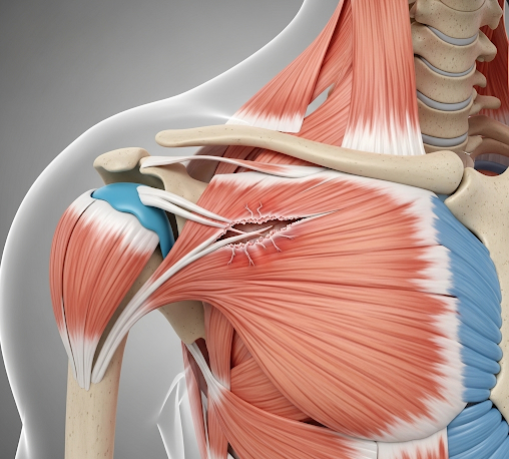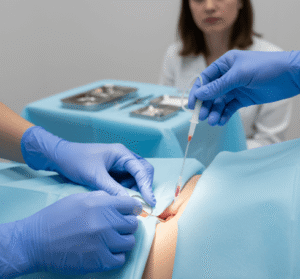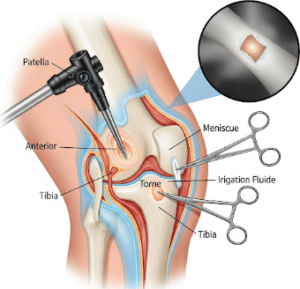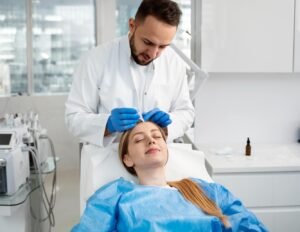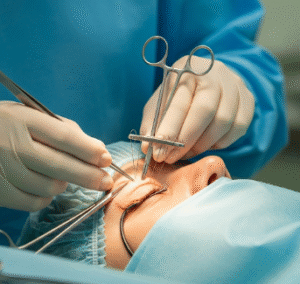Overview
A rotator cuff injury involves damage to the group of muscles and tendons that stabilize the shoulder joint and enable arm movement. It is a common cause of shoulder pain and disability, especially in athletes and older adults. Injuries can range from inflammation and tendonitis to partial or complete tears, affecting shoulder strength and mobility.
What is a Rotator Cuff Injury?
The rotator cuff consists of four muscles and their tendons—supraspinatus, infraspinatus, teres minor, and subscapularis—that surround the shoulder joint. Injury occurs due to overuse, trauma, or degeneration, resulting in pain, weakness, and limited range of motion. Rotator cuff injuries can be acute or develop gradually over time.
Symptoms
Typical symptoms include
- Shoulder pain, especially with overhead activities
- Weakness or difficulty lifting or rotating the arm
- A clicking or popping sensation during shoulder movement
- Limited range of motion and stiffness
- Night pain that disrupts sleep
Causes
Common causes include
- Repetitive overhead motions (e.g., throwing, swimming)
- Trauma or falls onto an outstretched arm
- Age-related wear and tear (degenerative changes)
- Poor posture or muscle imbalances
- Sudden heavy lifting or strain
Risk Factors
Factors increasing the risk of rotator cuff injury are
- Age over 40 years
- Participation in sports or occupations involving repetitive shoulder use
- Previous shoulder injury or surgery
- Smoking, which impairs tendon healing
- Poor conditioning or muscle weakness
Complications
If untreated, rotator cuff injuries can lead to
- Chronic shoulder pain and weakness
- Frozen shoulder (adhesive capsulitis)
- Progressive tendon tears and muscle atrophy
- Reduced function impacting daily activities and quality of life
Prevention
Preventive measures include
- Strengthening shoulder muscles through regular exercise
- Proper warm-up before sports or heavy activity
- Avoiding repetitive overhead motions without rest
- Maintaining good posture
- Early treatment of shoulder pain or injury
Treatment Options in Korea
South Korea offers comprehensive care for rotator cuff injuries, combining modern orthopedic surgery with rehabilitation and traditional therapies.
1. Conservative Management – Includes rest, ice, physical therapy, and nonsteroidal anti-inflammatory drugs (NSAIDs) to reduce pain and inflammation.
2. Corticosteroid Injections – Administered for persistent inflammation to provide relief.
3. Arthroscopic Surgery – Minimally invasive repair of torn tendons using advanced surgical tools, commonly performed in Korean orthopedic centers.
4. Open Surgical Repair – For large or complex tears, open surgery may be required.
5. Rehabilitation Programs – Post-surgery physical therapy to restore strength, flexibility, and function.
6. Integrative Treatments – Some Korean clinics offer acupuncture and herbal medicine to support recovery and pain management.
7. Leading Korean Hospitals for Rotator Cuff Injury Treatment
- Seoul National University Hospital – Orthopedic Surgery Department
- Asan Medical Center – Shoulder & Elbow Clinic
- Samsung Medical Center – Orthopedic & Sports Medicine
- Severance Hospital – Musculoskeletal Surgery Unit

